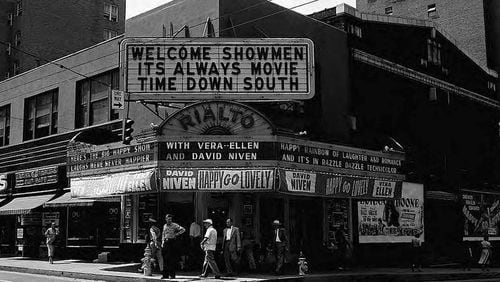Q: What’s the history of downtown Atlanta’s Rialto theater?
A: The Rialto Center for the Arts is a century-old theater situated in the heart of the Fairlie-Poplar Historic District, which is located and named for the crossroads of Fairlie and Poplar streets.
Since fall 1916, the theater has stood at the corner of Forsyth and Luckie streets. Now part of Georgia State University, the Rialto is a cultural downtown centerpiece.
“While the Rialto Center for the Arts at Georgia State University has many unique attributes that distinguish it from other performing arts venues, the fact that for more than 100 years the Rialto has been a vital thread in the cultural fabric of a vibrant downtown Atlanta truly sets it apart,” said Leslie Gordon, Rialto director.
Initially named the Piedmont Theater, the original Rialto was built at the beginning of the 20th century when many downtowns were becoming hubs for entertainment. With 925 seats, the Rialto was the Southeast’s largest movie house.
“It was built at a critical junction in theater history because before the Rialto was constructed, the buildings that were used for entertainment, called opera houses, they were used for live entertainment,” said Timothy Crimmins, history professor and director of the Center for Neighborhood and Metropolitan Studies at GSU. “So, the Rialto represents the construction of a building that was designed for motion pictures, but could also include live entertainment.”
The theater was home to movie screenings and live vaudeville acts, Crimmins said. The Rialto in 1940 hosted the world premiere of “Who Killed Aunt Maggie.” By mid-century, the downtown movie houses faced competition from theaters sprouting up in neighborhoods and suburbs, said Crimmins.
In 1962, the original Rialto was torn down and replaced with a larger theater. By the 1980s, the Rialto was no longer showing first-run films, and in 1989, the theater closed. However, Georgia State acquired the Rialto in the early ’90s and redesigned it an 833-seat theater, with improved acoustics, larger lobby box office facilities, Americans with Disabilities Act-accessible improvements, a new stage and an orchestra pit.
The Rialto hosts performing arts events, including jazz concerts and contemporary dance, as well as film screenings and presentations from international artists. The venue also has hosted university functions and special events, such as the Gospel Music Awards; it also offers programs such as Rialto Jazz for Kids.
Gordon said the Rialto’s long history makes it truly unique.
“But the thing that I find sort of exciting is that, as far as we can tell, we’re the only business that’s been doing the same thing on the same corner for over 100 years,” Gordon said.






